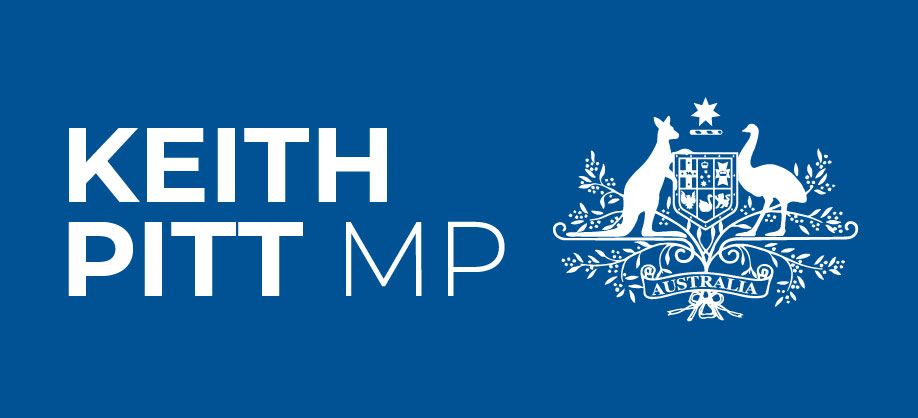Private Members Business – Remembrance Day
Mr PITT (Hinkler—Assistant Minister for Trade, Tourism and Investment) (18:10): The last shot of World War I was fired at the 11th hour of the 11th day of the 11th month in 1918. There were 300,000 Australians that went to the Great War; 60,000 died and 156,000 were wounded or taken prisoner. More than a third of those who died have no known grave.
In Australia, on the 75th anniversary of the Armistice in 1993, the remains of an unknown Australian soldier, exhumed from a First World War military cemetery in France, were ceremonially entombed in the Australian War Memorial’s Hall of Memory. In July last year, six formerly unknown Australian soldiers were given headstone dedications at Fromelles, including a soldier from my electorate.
James Benson, who was born in Bundaberg, was killed at the Battle of Fromelles on 19 July 1916. He was married, employed as a linesman and lived in Cheltenham in South Australia. Private Benson enlisted in the Australian Army on 5 July 1915 and was attached to the 32nd Battalion A Company. The remains of Second Lieutenant Benson were identified in 2016 by the Australian Army’s Unrecovered War Casualties Fromelles project, a team that is trying to identify 250 Australian and British World War I soldiers found in a mass grave that was discovered in 2009 at Pheasant Wood near Fromelles. Second Lieutenant Benson’s name was unveiled at Fromelles at a ceremony as part of the 100th anniversary of the Battle of Fromelles.
The Battle of Fromelles, west of Lille in France, lasted just 24 hours and was the first major engagement of Australian soldiers on the Western Front in 1916. In the battle, the Australian 5th Division suffered 5,533 casualties in just 24 hours. It is Australia’s bloodiest single day in military history.
I sincerely hope the identification of Second Lieutenant Benson brought some peace and comfort to his family. We have never forgotten the service of Australians who fought and died in the First World War. We should reflect on the sacrifice of Second Lieutenant Benson, who was one of 45,000 who lost their lives in World War I on the Western Front. We honour those men and their families 100 years later by finding out who they were and marking their graves. The Australian Army’s Unrecovered War Casualties Fromelles project team has identified the names of 150 soldiers discovered in 2009, while 70 Australians are still unidentified.
The electorate of Hinkler is fortunate to have a very strong and active veteran population, one that is much larger than average. The Department of Veterans’ Affairs currently provides direct financial support to almost 4,200 Hinkler residents. I would like to make mention of one local veteran, who has been a stalwart of the Bundaberg community for many decades: Tom McLucas OAM. Tom is now 91 and fought in the Second World War in the 2/24 Infantry Battalion. It was one of the four front battalions in the First Battle of Alamein. It was with the 2/48 Battalion, and solely defeated German general Rommel. In the Second Battle of Alamein, 720 of his battalion fought. Only 52 remained standing after the battle.
When he returned home, he devoted himself to the RSL, disabled veterans and the Legacy Pensions Committee for eight years. He spent 11 years as an advocate and was involved at a sub-branch, district, state and national level for 60-plus years. He has been granted honorary RSL state life vice-president, district and Bundaberg sub-branch honorary life vice-president, RSL Gold Badge life membership and Meritorious Service Medal, as well as an Order of Australia Medal, a British Empire Medal and an RSL bicentennial medal.
Tom is currently in hospital after a fall and doing it fairly tough. He is a gentleman that I see at every dawn service and in the afternoon at Burnett Heads, and I certainly wish him well. It is important that we keep the memory alive of service personnel like Tom and educate the next generation about the service and sacrifice made by men and women throughout the theatres of war.
The southern end of the electorate at Hervey Bay has had the honour of being chosen as one of three locations in regional Australia to host the international exhibition, The Belgians have not Forgotten. It was a year ago that I met with Belgian ambassador, His Excellency Jean-Luc Bodson in my office in Canberra to discuss bringing this exhibition to the bay. The ambassador had visited Freedom Park for the Centenary of Anzac memorial in 2014 and was impressed with the proud returned services community in the region. At the ceremony, he said:
We often have Australian visitors to our memorials and shrines, and I assure you that Belgium doesn’t forget.
The exhibition demonstrates that the words spoken by the ambassador still ring true today and that the strong relationship continues between the people of Belgium and the people of Australia. The exhibition features wartime artefacts, photographs, maps and film footage from the Memorial Museum Passchendaele 1917 in Zonnebeke in Belgium.
I encourage residents to visit the exhibition and tell family and friends about it. It is a very rare opportunity to have an exhibition of this scale in Hervey Bay, and people have already travelled from various locations to see it. I would certainly like to thank all of those involved—the Memorial Museum Passchendaele 1917, the Zonnebeke council, the Flemish government, the Embassy of the Kingdom of Belgium in Australia and, lastly, the Australian government. Lest we forget.

